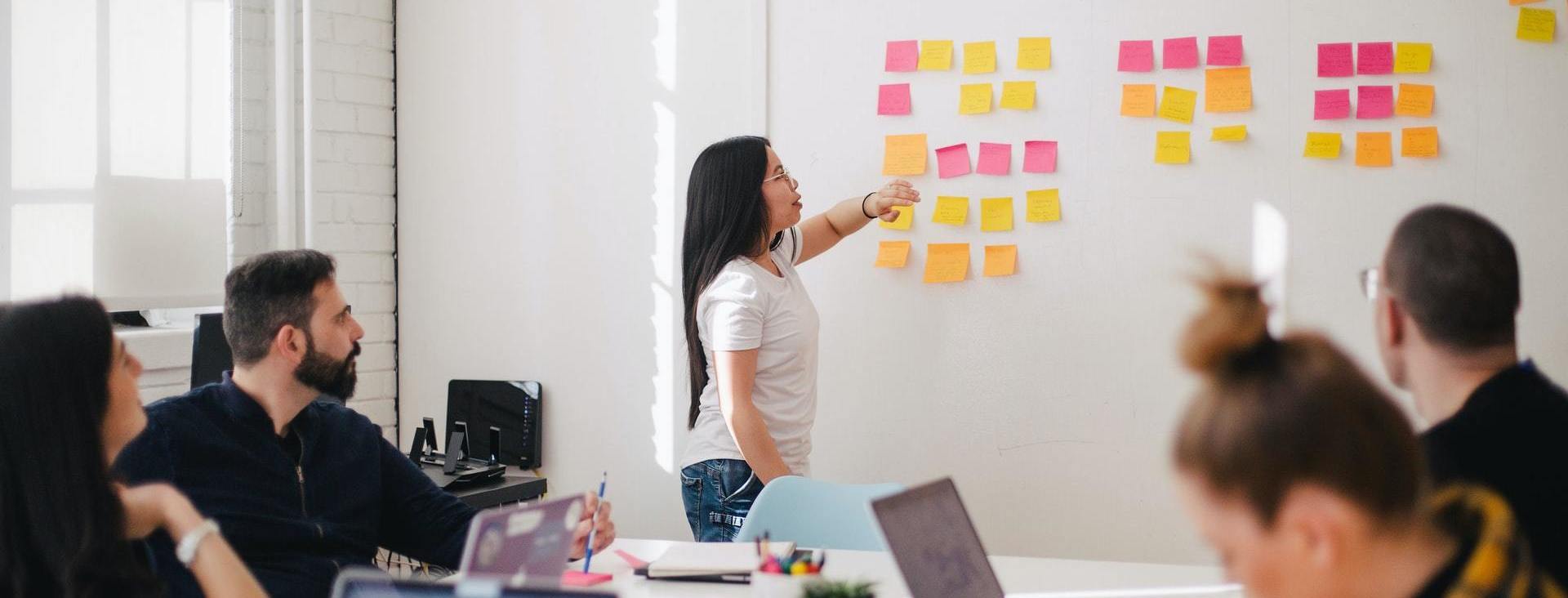What is your website strategy?
Posted on 8th June 2020 at 10:42
Every business needs a website. These recent few months of lockdown have made that abundantly clear. No matter what your line of work, whether you sell online or simply operate a physical shop, having a website gives you a platform to continue trading, as well as staying in touch with your clientele.
Even when the lockdown period is over, the world will be changed. People don’t always shop during business hours, and they are connected at all times. So, in short you need a website. But your thought process shouldn’t end there.
In order to maximise the potential power of a website, you need to come up with a strategy that works for you.
Below we will outline what we mean by a website strategy and give you some insightful advice on how to determine yours.
What is a website strategy?

At its most basic, a website strategy is determined by the overall goal of your online business. Is it to be selling through an online shop? Are you trying to drive traffic or leads to other parts of the business? Or is it simply a platform for a brochure or information? You need to think about what you want your website to achieve and this will help you to create your strategy.
Focus on what you want people to do on your site. Do you want them to make purchases or to book appointments? Will they be there to try and locate your physical store or to find out more product information? Once you have a clearer picture of what your customers want to get from your website, you can start to plan your web strategy.
Start by identifying the three primary things you want people to do on your website. If you try and skip through this process you will end up with a website that is disjointed and lacking in focus. These three goals should be the driving force behind your web strategy across all platforms, including social media.
Once you have your goals, you need to think about the possible pathways for your customers to arrive on your site. There may well be multiple pathways to end up at the same point. Think about your own experiences when you want to buy or book online. Was it easy or difficult on certain sites? What would you want to see at each point? Use this information to start thinking about your website design.
Visualising your site structure

Once you have your goals in place, you can start thinking about a site structure that is going to help you achieve them. Start by creating a map that allows you to see how your customers will navigate to the parts of the site where you want them to end up.
A good map will give you some idea how your navigation menu will work. It will inform the structure and organisation of the information you will provide online. This, in turn, will tell you how many pages your site will need and what kinds of pages these will need to be.
More importantly, it may tell you what pages your site can do without. Remember that effective web strategy is about knowing what you don’t need. Never be tempted to just throw the kitchen sink at your website, as it can easily lead to confusion for your visitors.
The basic structure of most websites follows the same pattern. That means including the following pages:
Home page – The main landing page of your site where you get your message up front and clear.
Product or services page – Details about the goods or services you provide, broken down into categories or individual items depending on how much information you need to include.
Contacts – A page with more details about how people can get in touch with you.
Pricing pages – These will include more information about how much your goods and services are going to cost.
Funnel pages – Pages that are created to drive visitors to where you want them to be, be it sales or booking forms.
There are plenty of other page types you may require, depending on your needs. These can include about us pages, blogs, self-configuration pages, ecommerce sections, and more.
Technical setup

Once you have a detailed plan for the layout of your website, you need to start thinking about the technical and design aspects. You need to make sure you have all the right tools and support for features such as ecommerce, forms and contact information, video hosting and more. It’s all well and good having a detailed plan, but you need to have the technical know-how to back it up.
Database functionality is another key tool you need to think about. Storing and accessing all the data you need for your site to function correctly is very important. Once you have established all of your functionality needs, this will give you a better idea about which platform is the most suitable for your web hosting.
There are so many things to think about when planning your website strategy. To the uninitiated, it can be very daunting coming to terms with all the planning and technical aspects of web design. Which is why it might be better to get help from the professionals.
As we have pointed out, your website is a major tool for your business, and with online competition being so rife, you need to know your site is well designed and performing at its best. Here at it’seeze Web Design Knutsford, we will work with you to design and create a web strategy that really works for your business.
Our talented team of designers will work with you to create a website that ticks all of your boxes. We will establish your key goals, and build an easy-to-use, affordable website that maximises your online potential. If you would like to know more about our services or to have a chat about what we can do for you, get in touch with us today.
Tagged as: Website Strategy
Share this post:

